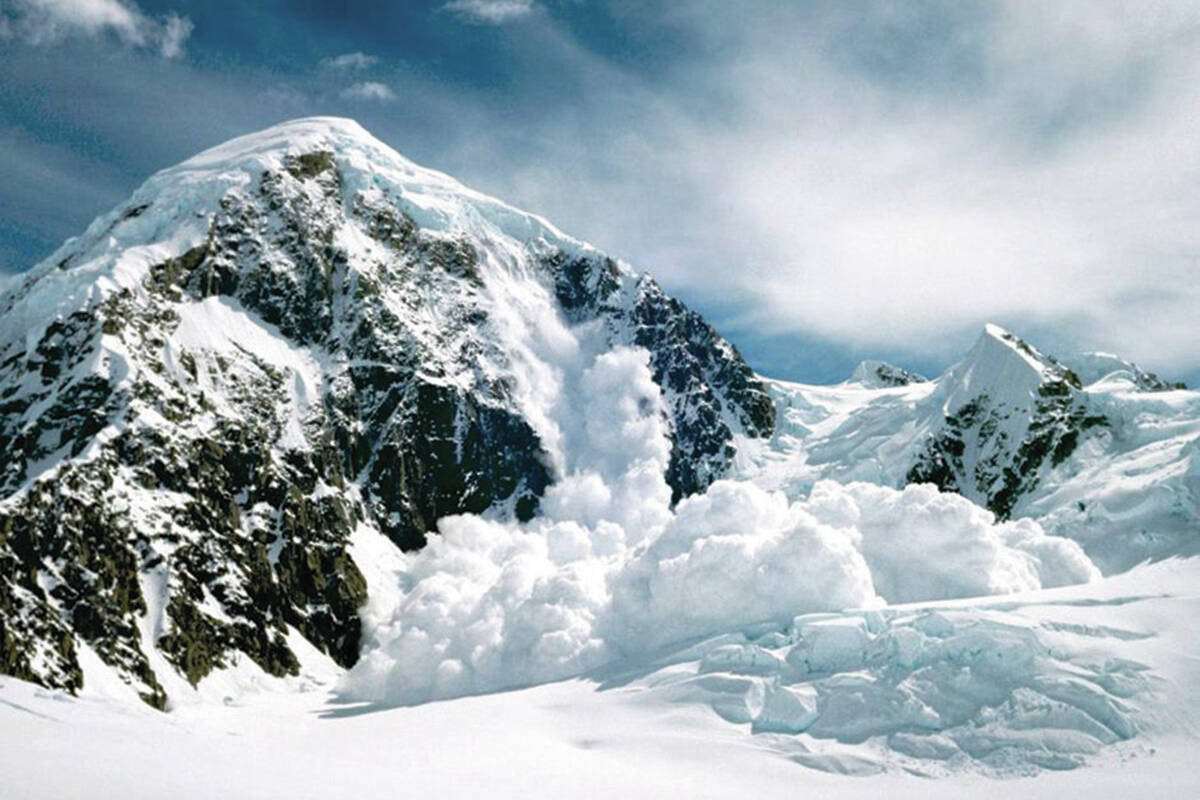UPDATE: Avalanche Canada clarified that while the risk of an avalanche is variable from day-to-day, this season’s snowpack is why the conditions are dangerous. With weak lower layers, the current conditions pose a danger because they create the possibility of more unpredictable and larger avalanches, which exacerbate the variable daily risk.
ORIGINAL: The risk of avalanches in Interior BC is the highest this season than it’s been in more than a decade, but Avalanche Canada have been wary of the conditions since the late fall.
“The story started back in November,” said Ryan Buhler, forecast program supervisor with Avalanche Canada.
The high-risk avalanche conditions that have garnered attention in Interior BC, and already claimed someone’s life, starting months ago and thousands of miles away. When a frigid Siberian polar vortex swept its way to B.C., the temperatures in the town of Revelstoke weren’t affected. With a low of –14 C late in November, it was almost warm compared to the vortex’s origin where temperatures dropped to –50 C. The effects of the vortex avoided in town at the time, were quietly laying a dangerous foundation that is impacting the avalanche season now and for the rest of the season. Ryan Buhler explained how the base that formed during the vortex is affecting the conditions, how Avalanche Canada monitors and forecasts avalanches in the region, and what they recommend for the season.
“The hotspot for avalanche activity recently has been centered roughly between Nelson and Valemount,” said Buhler, adding “We’re sort of dead centre of that activity.”
It takes a village –or in this case– an industry to forecast avalanches. Buhler, who’s been with Avalanche Canada for more than ten years, credited the “synergy” that the avalanche industry in Canada has for its ability to accurately forecast. After the vortex hit, it was backcountry guides who flagged the risk first.
“[The guides] were spot on, because as soon as we had that big storm around Christmas, we started to see those layers becoming very reactive,” said Buhler.
Avalanche Canada has access to information gathered by multiple sources, not just the data that they collect, themselves.
“We have a really great information sharing platform that’s managed by the Canadian Avalanche Association, where we can share data,” said Buhler.
The platform allows industry experts to submit the results from their field tests, which gives Avalanche Canada information about the snow on the ground. With resorts, backcountry guides, and casual enthusiasts all around Revelstoke testing every day, the organization always has an abundance of data for the region.
Using their close relationship with Environment Canada, forecasters also analyze the weather. Despite being adept weather forecasters themselves, they meet with Environment Canada in the morning to go through the meteorological report to ensure their forecast is accurate. They also consult Mountain Weather Forecast, which can offer even more weather data for specific mountains in the area.
The snow data that the guides alerted them to was a hard and coarse layer of snowpack near the base. The layer’s top is “coarse like sugar,” which makes it hard for the next layers of snow to bond to it. The effect this has is like building a house on an unreliable foundation — every layer added is unpredictable and it gets more dangerous as the layers build up.
The issue with the problematic layer is that it is so close to the ground. It means that for the rest of the season, the higher risk of avalanche will persist, which is why Avalanche Canada is preaching a conservative attitude for the backcountry.
“Patience is what we’re saying. It’s a good time to be patient. It’s not the time for pushing out, finding big objectives. It’s a good time to keep it simple, and that’s what the professionals are doing right now,” said Buhler.
Buhler advised anyone headed into the backcountry should always have all the gear, which includes transceiver, probe, and shovel at the minimum. He added that “having that gear isn’t enough,” and that having the training to know how to use the gear is paramount.
The avalanche risk around Revelstoke remains “very dangerous,” according to Avalanche Canada’s website.
READ MORE: Communication breakdown to blame for Revelstoke’s holiday snow removal issues
READ MORE: Columbia Shuswap Regional District director argues short-term rentals shouldn’t be prohibited
@ZacharyDelaney
zach.delaney@revelstokereview.com
Like us on Facebook and follow us on Twitter and subscribe to our daily and subscribe to our daily newsletter.

